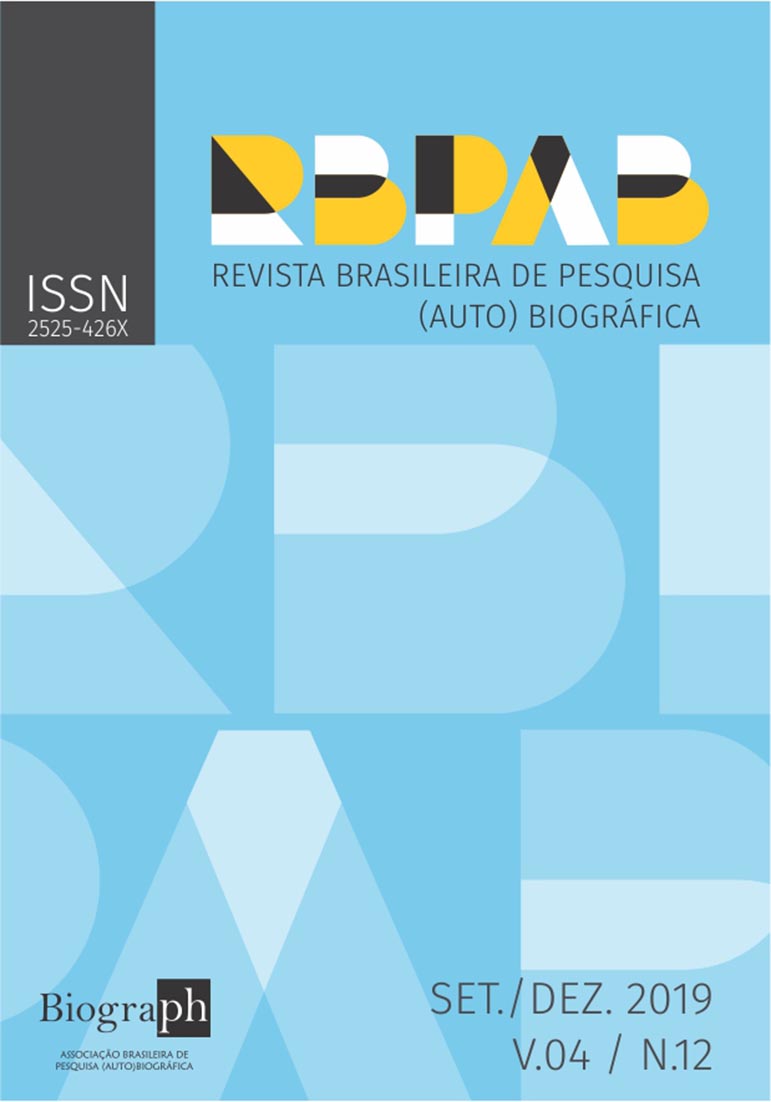Life history of Naito Masu: a female pioneer of women’s education in Yamanashi Prefecture in the early Meiji Period
DOI:
https://doi.org/10.31892/rbpab2525-426X.2019.v4.n12.p879-892Palavras-chave:
Women's Education, Life history, Travel diary, Edo periodResumo
Naito Masu (1823~1901) was the first woman who advocated publicly the necessity of education for women; she did so in early Meiji period (1870’s) in Yamanashi Prefecture. In the Edo period, it was said that women did not need to study for a long time; therefore her achievement of founding a women’s private school and publishing a textbook regarding moral education for women were epoch making activities in the women’s education in Japan. This paper presents Masu’s life history and the process of development, because she is considered a woman who was sensitive to the gap between the education for men and women in developing their own lives. Masu’s activities following the Meiji Restoration are well-known; however, it is unknown about how and where she had been educated prior to this time. There is a travel diary written by Masu, named as “Suruga-kiko” and owned by Yamanashi Prefectural Museum. It is the appropriate source to know the first half of Masu’s life because it is thought to be written before the Meiji Restoration. This paper looks to draw a clear picture of the unknown part of Masu’s life, including her friends and acquaintances before Meiji Restoration, by citing it. She had grown her circle of acquaintances in the area along Fujigawa Highway and Fuji River. This area is associated with Japanese classic literature, as well as with most pupils of Prof. Hirata, lived in Kai no kuni. The author made investigations in the area and interviewed some people who live there now about Masu and the region’s educational history. As the result of this original research, this paper presents that Masu must developed her culture and education there.
Downloads
Referências
Monbusho [Ministry of Education]. Monbusho Nenpo, v.1 (Meiji 6) [Annual Report of Educational Ministry, v. 1, 1873]. Tokyo: Senbundo, 1966 (reprinted ed.).
AMANO, Haruko. Edojidai no Joshikyoiku ni tsuite: Oraimono wo toshitemiru Josei no Kyoiku to Seikatsu. Annual report of the Research Institute for Culture and Cultural History, Okayama, Institute for Culture and Cultural History, Notre Dame Seishin University. vol. 21, p. 3-20, Mar. 2008.
ASAMI, Norio. A Strong Woman in Meiji Period: the life of Tanaka Kaku. Hanno City: Group Kurashi, 2009.
YAMANASHI, Joseishi Noto Sakusei Iinkai (ed.). Nenpyo ni miru Josei no Ayumi Meiji-hen. Kofu: Yamanashi Joseishi Noto Sakusei Iinkai, 1974.
HAYASHI, Yoshikazu; SAKAMOTO, Atsushi; TAKENAKA, Ro. “Kunisada”saiban・Shimatsu. Tokyo: San-ichi Publishing Co., Ltd, Jul.1997.
HIRATA, Atsutane zenshu kankokai (ed.). Shinshu Hirata Atsutane Zenshu Bekkan [Renewal of Hirata Atsutane’s Complete Works Supplementary Volume]. Tokyo: Meityoshuppan, 1981.
INAOKA, Masaru. Ernest SATOW to NAITO Denuemon no Koryu. The Culture of Publication in Meiji Period. Kyoto: Rinsenshoten - National Institute of Japanese Literature (ed.), 2002. p. 31-77.
KAWATA, Atsuko (ed.); KATO, Tokio (reprints “Suruga-kiko”), Bakumatsu Meiji no Josei NAITO Masu no Shogai to sono Kyoyo Keisei Katei: “Suruga-kiko” zenbun honkokutsuki. [Life History of Naito Masu and the Process of Her Cultivation: in addition of Reprint of “Suruga-kiko,” Her Travel Diary]. Tokyo: [Ochanomizu University Global COE Program: Science of Human Development for Restructuring the “Gap Widening Society”], 2010.
KIYOKUMO, Shungen. Naito Denuemon. In: Seishonen no tameno Yamanashi Kenmin Kaigi (ed.). Kyodoshi ni Kagayaku Hitobito. Kofu: Shokokuminsha, v. 3, Mar. 1974.
KNAPP, Bettina L. Images of Japanese Women. New York: The Whitston Publishing Company, Troy, 1992.
NAITO, Masu. Jogaku Kajuku Gansho [the Application of Opening Private Women’s School]. Kofu Newspaper, Kofu, April 7th, 1875.
OZAKI, Yasuhiro. Tanaka Chinjike nimiru Meijishoki no Joseikyoshi: Tanaka Kaku to sono Shuhen no Hitobito. Hanno-shi Kyodokan Kenkyukiyo, Hanno, Hanno-shi Kyodokan. v. 2, p. 41-67, mar. 2003.
SHARON, H. Nolte; HASTINGS, Sally Ann. The Meiji State’s Policy toward Women, 1890-1910. In: BERNSTEIN, Gail Lee. Recreating Japanese Women, 1600-1945. Berkley: University of California Press, 1991. p. 151-174.
SHIBA, Keiko. Tabinikki karamita Kinsei Josei no Ichikosatsu. In: KINSEI, Joseishi Kenkyukai (ed.). Bunka to Josei (Nihon Joseishi Ronshu; 7). Tokyo: Yoshikawakobunkan, 1998. p. 56-90.
SHIBA, Keiko. A Study on women from the Edo period, from the view point of travel diaries. In: Kinsei Joseishi Kenkyukai(ed.). Bunka to Josei (Nihon Joseishi Ronshu;7).Tokyo: Yoshikawakobunkan, Apr.1998.p.56-90. Ninomiya Aya: Chichi Sontoku no Jigyo ni tsukushita Shogai: Edoki Hitobunko, vol. 3. Tokyo: Katsura Bunko, Nov. 2000.
TAKANO, Toshi. Study of Primary School for Girls in the Early Meiji Period: The Source of Women’s Education in Modern Japan. Tokyo: Otsukishoten, Mar. 2002.
WALTHALL, Anne. Taoyame to Meiji Ishin: Matsuo Taseko no Handenkitekishogai. Translated by SUGAWARA Kazuko; TASAKI (NOZAWA), Kimitukasa; TAKAHASHI, Aya. Tokyo: Perikansha, 2005. [the original work: The Weak Body of a Useless Woman: Matsuo Taseko and the Meiji Restoration. Chicago: University of Chicago Press, 1998.]
YABUTA, Kan. The present situation of the studies about women in Edo period. Rekishihyoron, Tokyo, Azekurashobo, n. 703, p. 25-36, Nov. 2008.













































